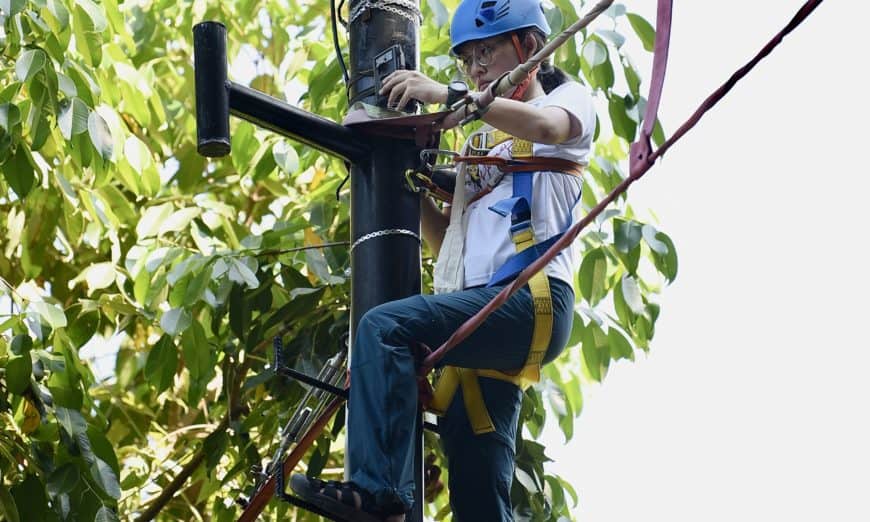CLIMBING to the top of a 40-foot high aluminium pole is no easy task, but for Langur Project Penang (LPP) team leader Yap Jo Leen, she exhibited no fear as she did so to retrieve a camera from the camera trap.
Every step she took was closely watched by her three other team members – communications specialist Eric Thoo, project executive Lee Khai Xian and environmental educator Teo Hoon Cheng, who had earlier helped Yap put on her harness before her climb.
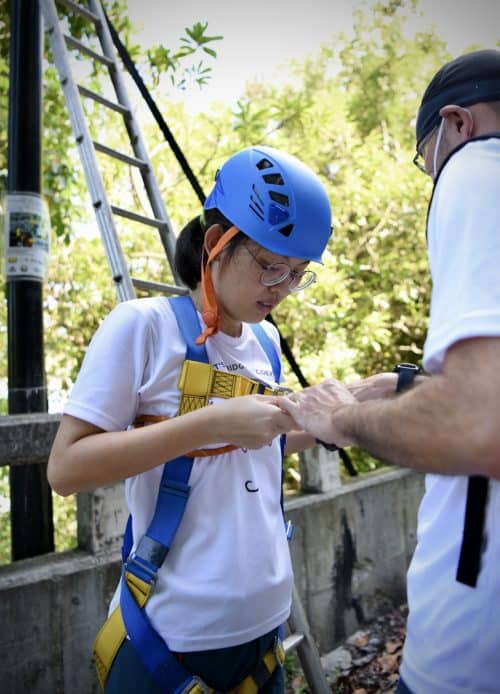
After she had brought down the camera, Yap replaced the rechargeable batteries, changed the memory card and then climbed the pole again to reinstal the camera. A total of 2,065 videos and photos were captured by the camera this time.
The batteries could last two months but through the innovation of a volunteer electrical engineer, the bridge now has a solar panel to charge the batteries of the camera trap.
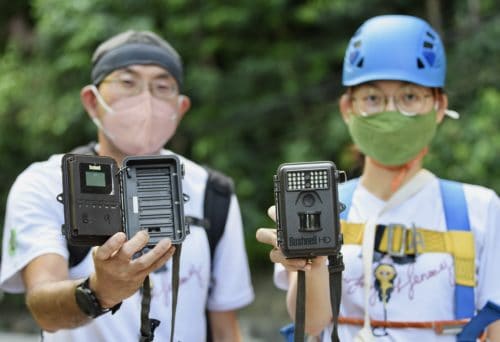
This camera trap was set up by LPP when they built a road canopy bridge in Teluk Bahang in 2019. The canopy bridge was the first of its kind in Malaysia, located some 200 metres from the Tropical Spice Garden.
“When there is an animal or a creature using the bridge, its movement can be detected by the camera which will automatically snap photos.
“The canopy bridge was designed for the usage of animals, such as dusky langurs, squirrels, reptiles, amphibians and small rodents to cross the road without fear or risk of getting hit by passing vehicles,” Yap told Buletin Mutiara which had the opportunity to see how they carried out their camera trapping maintenance work.
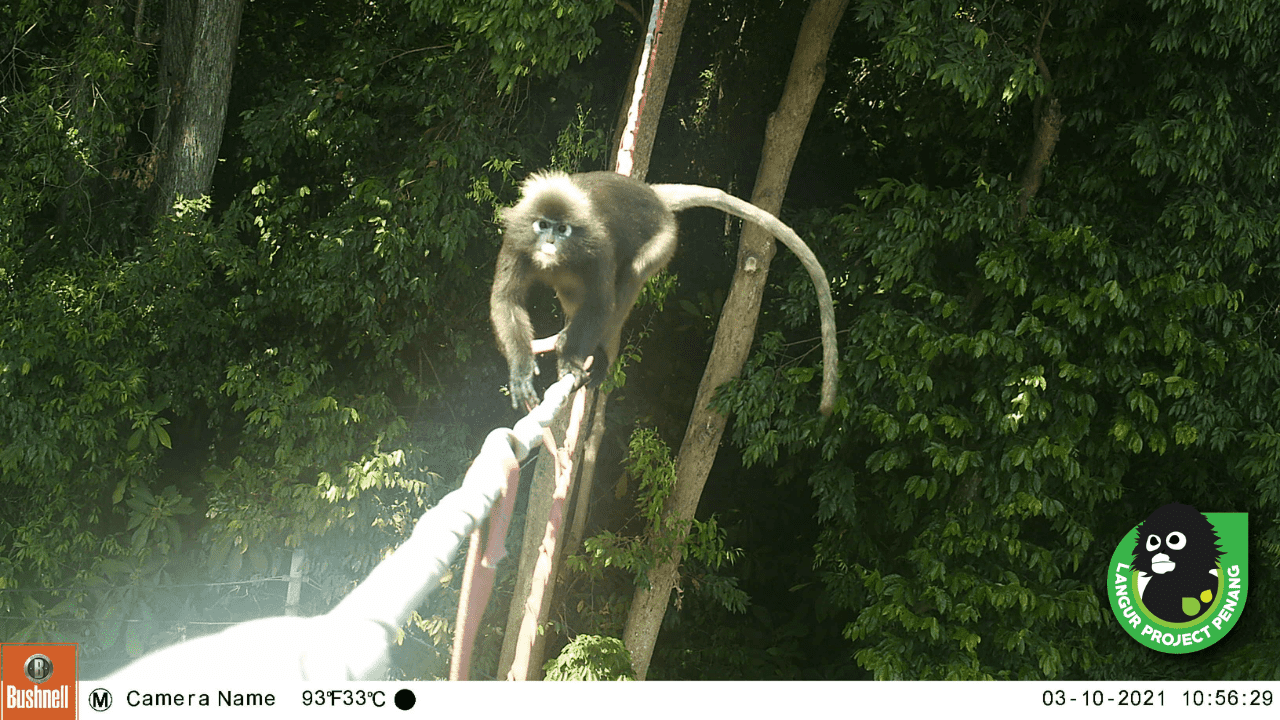
The bridge is made of upcycled fire hoses, nuts and bolts, and wire rope clips. Fire hoses are chosen as they are durable and have a lower risk of theft due to their lack of resold values.
The bridge is connected from the aluminium pole to a tree across the road. It is 12.5 metres long and 12 metres above the road.
Yap said the pole was installed by a contractor engaged by the Public Works Department while the tree was certified to be stable and healthy and able to last some years by an arborist from the Universiti Sains Malaysia.
The whole process to get a permit from the various authorities to build the bridge was quite long before the first bridge prototype, a single rope of twisted fire hose, was constructed on 28 February 2019.
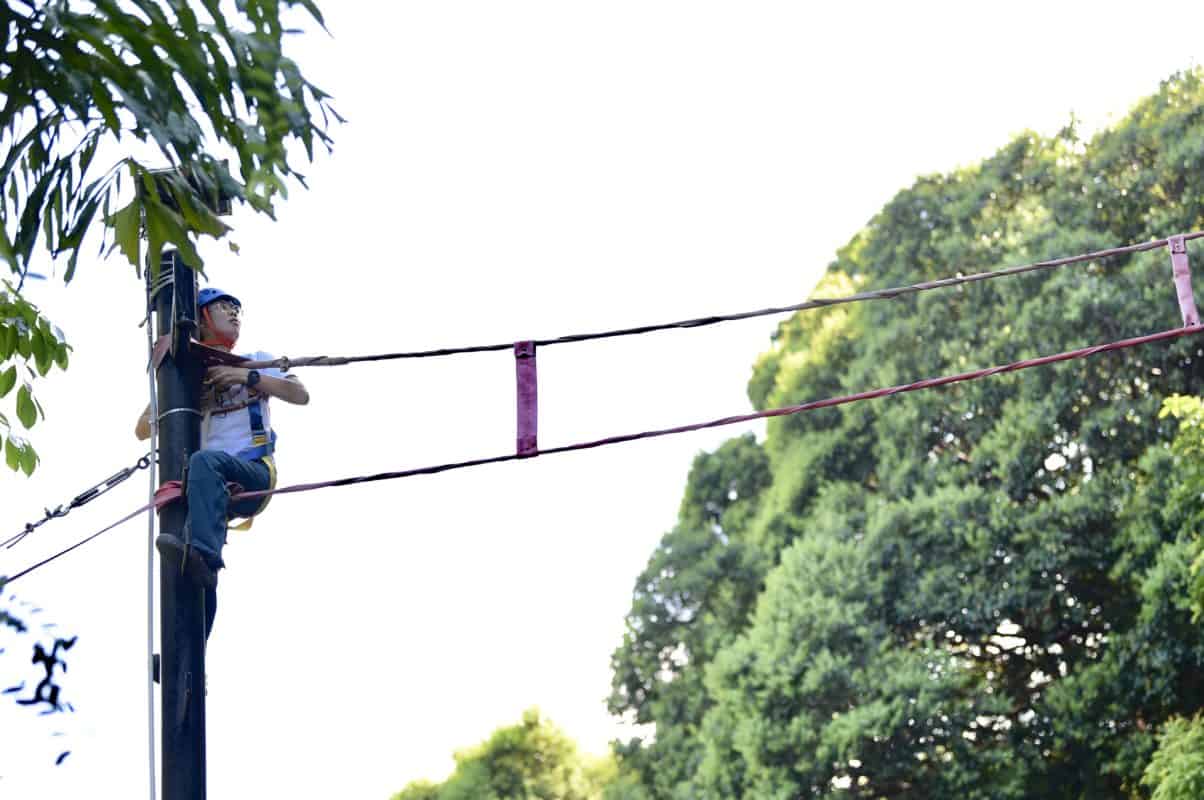
From the camera data, a total of 729 wildlife crossings were observed from 1 March 2019 to 19 August 2020. The wildlife included 703 plantain squirrels, 20 long-tailed macaques and six dusky langurs (Trachypithecus obscurus).
Then, on 19 August 2020, the second bridge prototype, a double twister, was constructed. A total of 1,399 wildlife crossings were observed from August 2020 to May 2021. The wildlife included 1,372 plantain squirrels, 12 long-tailed macaques and 15 dusky langurs.
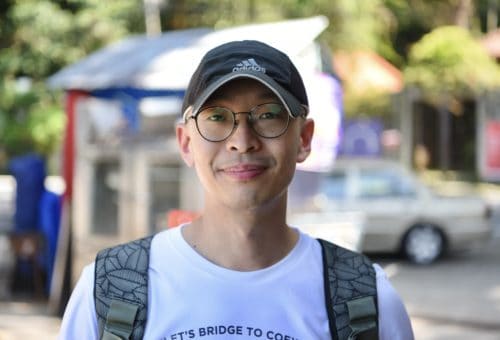
According to Thoo, prior to the setting up of the canopy bridge, the wildlife had three ways to cross the road. They had to leap from tree to tree, use the overhead cable wire or cross the road directly.
“It’s very scary to see the monkeys run across the road directly. Unlike humans, they don’t look left or right. They just run across and can be hit by passing vehicles. We had roadkills before,” Thoo said.
Yap chipped in: “That’s why we chose this spot to build the bridge after months of research.
“Within six months of research, we found seven roadkills. Six of them involved dusky langurs and one a slow loris which was electrocuted.
“But since the bridge was built, there has been no roadkill in this area.”
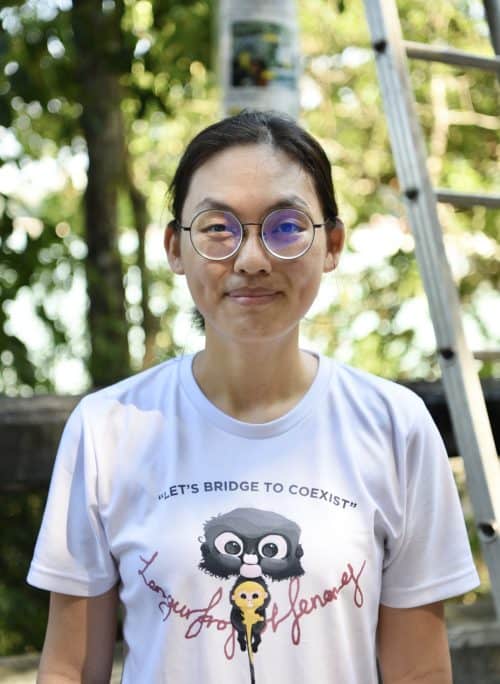
Yap, who is passionate about environmental education and research, has named the bridge as Ah Lai’s Crossing.
“Ah Lai was the first dusky langur that I studied, and thanks to Ah Lai, he took me to many places around his home range.
“I also observed and followed him to the roadside where I was saw how he and his family used to run across the road in order to search for food.
“As urbanisation and forest fragmentation happen, many wildlife have to survive in a human infected environment. Sometimes they have to cross the road or run on rooftops in order to search for food, search for shelter and search for their groups and friends,” Yap added.
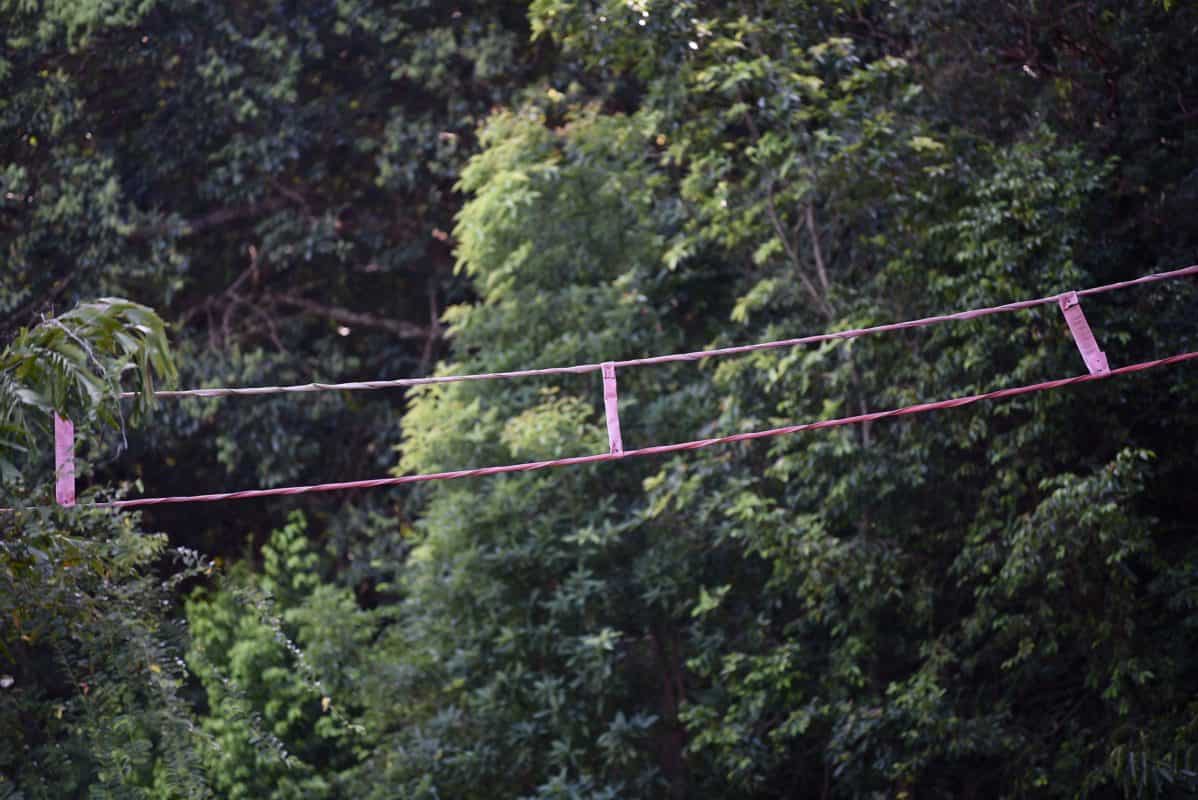
Where Ah Lai is now, Yap has no idea. But she believes that Ah Lai, which is not implanted with a microchip, could have moved on to nearby hills to set up yet another family during the movement control order for the past two years.
It is illegal to keep dusky langurs, also known as spectacled leaf monkeys because of the white rings around their eyes resembling spectacles, as pets. They are an endangered species and protected under the Malaysian Wildlife Conservation Act 2010.
Why picked dusky langurs for studies?
Yap explained that as a Penangite, she wanted to study a type of monkey species in her hometown but found that the state does not have a lot of information about the species.
“I want to do something for my hometown and I choose this primate species for my PhD.
“When I conducted online literature search, I found that the langurs are understudied. Not many know about them. And I then spoke with my thesis supervisor Dr Nadine Ruppert and she is very supportive of the project.”
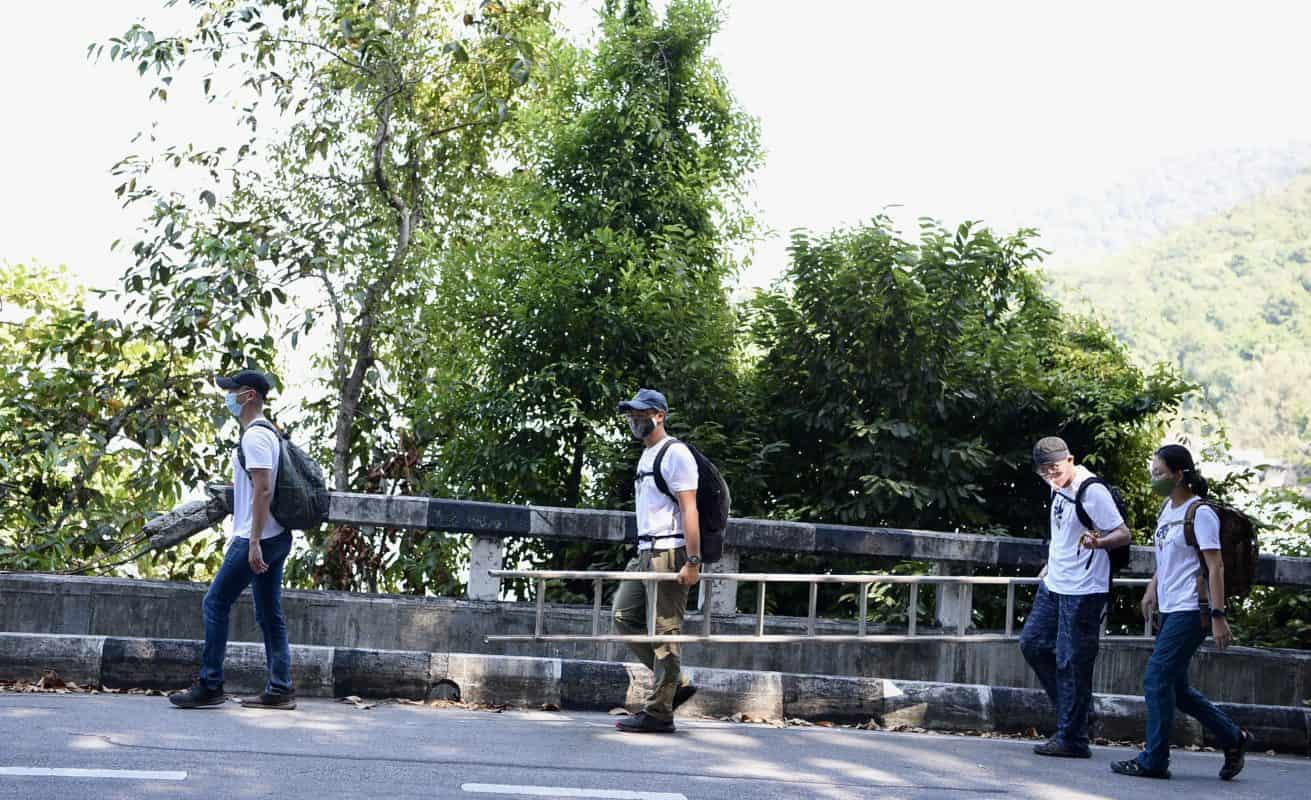
While her studies are related to dusky langurs, Yap said the whole project (Langur Project Penang) is a team effort to study the monkeys’ ecology and behaviour.
“It’s a small citizen science project, which consists of volunteers of different backgrounds, working together to promote co-existence between human and wildlife in a shared environment.
“Our objective is to provide a platform for committee members for different stakeholders from government and non-governmental organisations to get together to contribute to wildlife through research, conservation and environmental education,” Yap said.
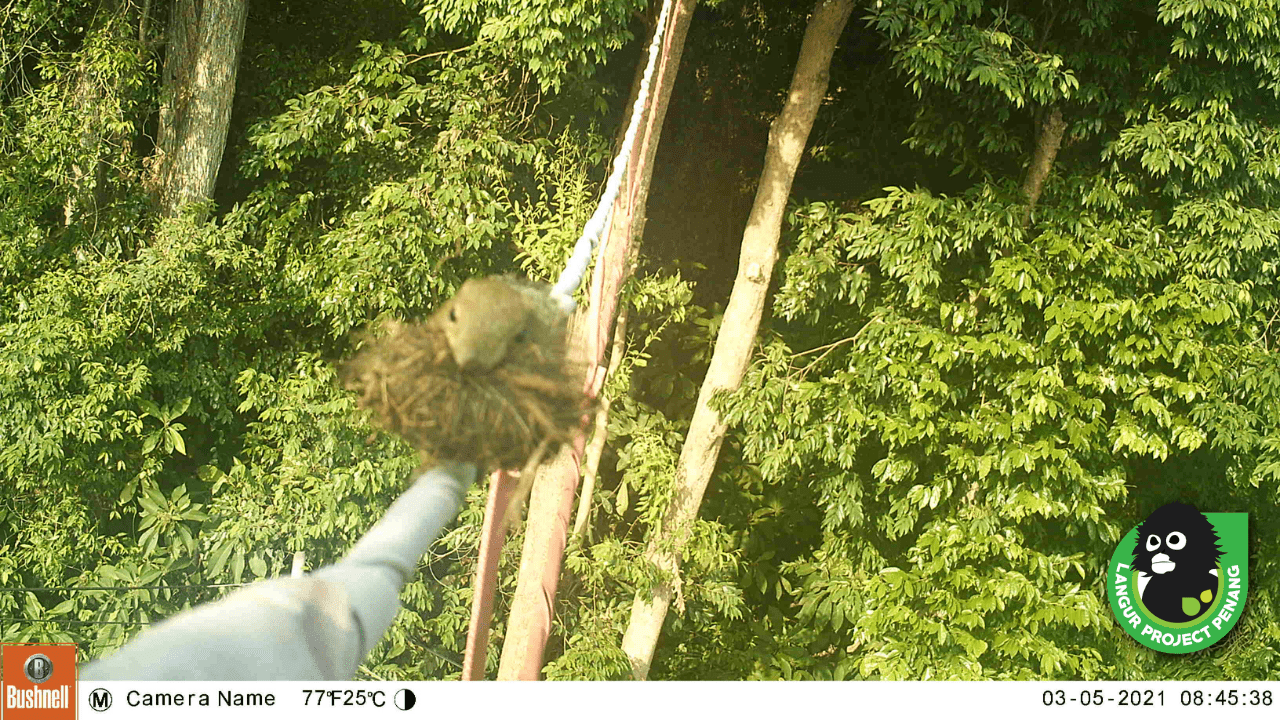
She advises the public never to touch, feed or interact with langurs.
The best way to appreciate them, she said, is to look at them in their natural habitat.
By feeding them, the langurs can become lazy to look for food and over time can become aggressive through habituation. By touching them, there is also the danger of disease transmission, she said.
LPP now operates under the umbrella of the Malaysian Primatological Society (MPS) based in USM. Yap herself is a board member of MPS, a non-governmental organisation.
According to Yap, they are always ambitious to build more canopy bridges but do not have enough money.
They plan to work with different stakeholders, raise funds and apply for international funding but the objective of LPP is to not dependent on funds and grants from the public.
“We want to be self-sustaining. So, our future plan is to register ourselves as a social enterprise so that we provide services such as environmental education and human primate interaction consultancy and work with corporate and merchandise collaboration to sustain our project,” she explained.
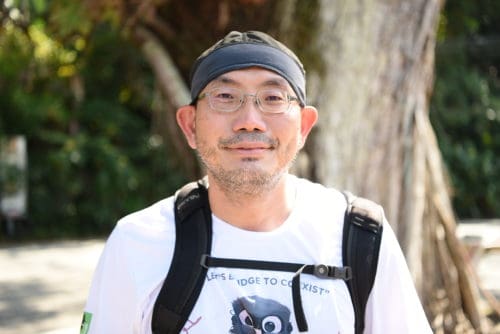
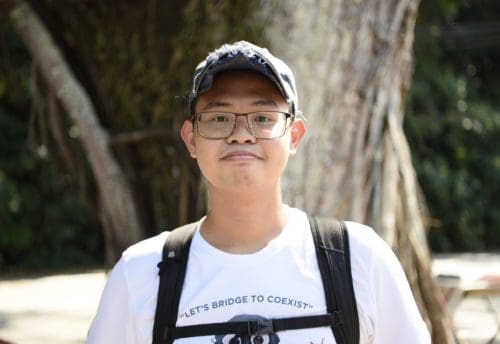
Yap said LPP plans to submit their findings to international journals for publication as they would like to share the information with the others.
LPP, she said, is also thankful to the public for reporting sightings of 250 dusky langur road crossings via WhatsApp messages or Facebook messages, beside furnishing their coordinates, photographs, time and date to them.
LPP is looking for more volunteers and interns from different backgrounds to contribute to wildlife conservations in Penang. Those interested can contact Eric Thoo at [email protected].
For more information about Langur Project Penang, please visit www.langurprojectpenang.com or visit their social media at Langur Project Penang-LPP (Facebook), @langurprojectpenang (Instagram), and @LangurPenang (Twitter).
Story by K.H. Ong
Pix by Muhamad Amir Irsyad Omar and courtesy of Langur Project Penang

